Omato Japanese Maple
$69.50 Original price was: $69.50.$48.65Current price is: $48.65.
- Free Shipping over $25
- Fast & reliable delivery options
- Enjoy top quality items for less
- Multiple safe payment methods

Japanese maples are often thought of as small, delicate trees that need special care, grown often for their tiny leaves and unique forms. That is certainly true, but among the many varieties are some that are much more rugged, and perfectly suitable to grow alongside or in place of the more traditional shade trees like red maple or oak. They would need to be sun tolerant, grow to a substantial size, and have bolder foliage. For that there is an outstanding variety – the Omato Japanese Maple – which not only looks like a shade tree, with uniquely large leaves but has spectacular red fall coloring that rivals any of the traditional trees of fall.
Growing Omato Japanese Maple Trees
The Omato Japanese Maple is a tree of robust and solid form. Its sturdy limbs grow upright, and create a rounded crown, with excellent branching structure that not only develops a strong tree but also looks lovely against the winter sky. It grows almost a foot a year so that within ten years it will be at least 8 feet tall, and after 25 years it will be at least 20 feet tall. The spread is a little less, from 6 feet to 15 feet or more in time. This compares very favorably with the growth rate of all but the fastest-growing shade trees, making the Omato Japanese Maple a real contender for that prized spot in the middle of your front lawn. Remember to allow plenty of room for this growth and spread, planting at least 10 feet away from walls, fences, property lines and the drip-line of established trees nearby. The smaller size of this tree makes it a wonderful choice for shade or specimen tree in a smaller yard since it is less than half the size of big trees like maples and oaks, which become much too big for small gardens. It is also a lovely addition to a woodland garden, standing proudly in a clearing, or partially-shaded by larger trees. Like all Japanese maples it can also be grown for many years in a container, where it will stay smaller, and its unique look will make it a superb specimen. It can even be grown as a bonsai tree, developing a sturdy trunk much sooner than many other varieties do.
Description
The leaves of the Omato Japanese Maple are unusually large, around 4 inches across, which is about the same size of native trees like the red maple, larger than most oak, and approaching that of trees like the sugar maple. Their unique size makes this tree look very different from the traditional delicate foliage of other Japanese maples. The leaves are divided into 5 or 7 lobes, cut over half-way into the leaf, but broad enough to give this tree good sun resistance, staying fresh and green all summer. In spring the leaves emerge soft green, but flushed and tinted with bright orange, especially around the margins and at the ends of the pointed lobes. They really are a lovely sight, and they give this tree a special look at that season. In summer they are rich and glossy, colored a lovely mid-green, and always look bright and fresh. When fall arrives this tree steps onto center-stage, and the leaves turn a uniform glowing bright red that is more powerful than almost any Japanese maple, and right up there with the brilliance of the larger fall trees.
Planting and Initial Care
The Omato Japanese Maple is hardy into zone 5, and all the way to zone 9, so it can be grown almost anywhere. In the cooler zones, it will happily grow right out in full sun, and the fall colors will be all the more powerful for that. In warmer zones, some afternoon shade may be needed unless you have reliably-moist soil in summer. This sun tolerance is a big plus for the tree. It grows best in moist, well-drained soil, enriched with organic material. Spring mulch with garden compost rotted manure or even rotted leaves, will keep the roots cool, feed the soil, and conserve moisture too. When young you should water regularly, but once established, this tree is much more able to take ordinary garden conditions than its more delicate relatives. Pests and diseases are very unlikely to ever be a problem, and with its fast growth-rate, this tree will soon become a substantial presence in your garden.
History and Origins of Omata Japanese Maple Trees
The Omata Japanese Maple is a selected form of the Japanese maple, Acer palmatum. Native to Japan, Korea and parts of China, this tree plays a part in Japanese culture equivalent to the sugar maples of the eastern states. People travel to see the hills ablaze in fall, and many selected varieties have been collected for centuries, with unusual leaves, weeping forms, colored bark, and other special features. The variety called ‘Omato’ first appeared in America around 2000 at Oregon Ornamentals, Hillsboro, Oregon, a small nursery run by John and Barbara Ellerbrook. They may have selected it from a batch of seedlings, or it may have arrived in a shipment from Japan, given its name, which means ‘large target’. That is, a large and easy to see tree. In any case, this unique tree is being highly recommended by experts, for its fall color, unique large leaves, sun-resistance and its larger size, so you can see why we think I would be the perfect shade tree for a smaller garden. We have many clients who come to us just to shop from our large collection of Japanese maples, so we know that this newer variety will be eagerly sought after. Order now – they will all soon be gone.
Be the first to review “Omato Japanese Maple” Cancel reply
Related products
Oak Trees
Birch Trees
Oak Trees
Shade Trees
Poplar Trees
Japanese Maple Trees
Japanese Maple Trees
Japanese Maple Trees



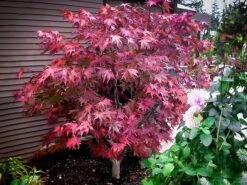
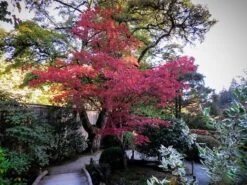
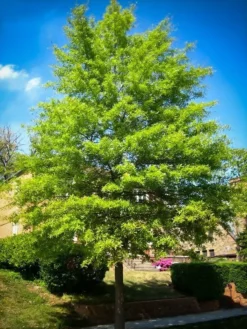





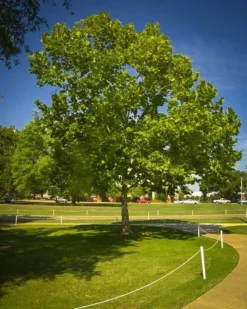
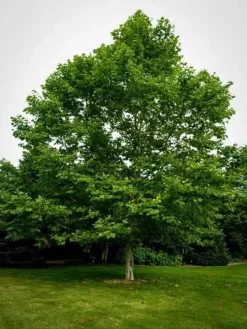
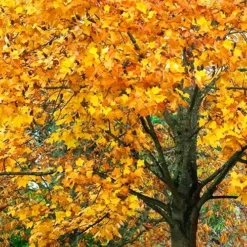

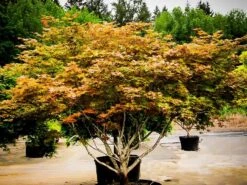

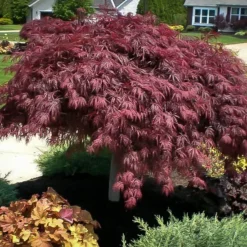



Reviews
There are no reviews yet.